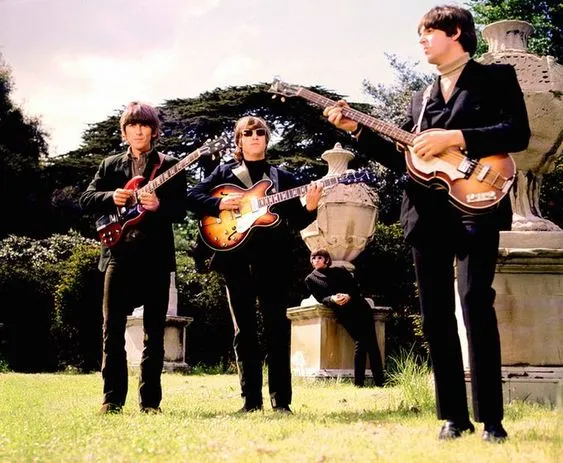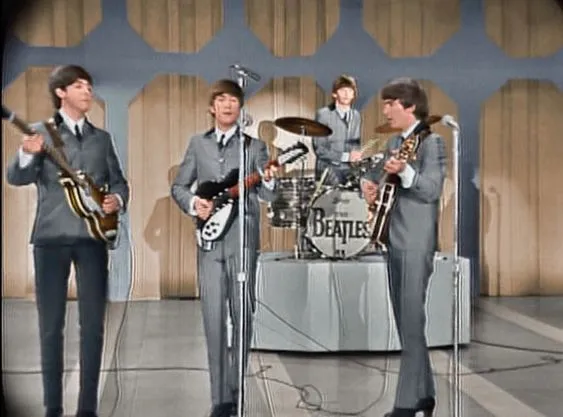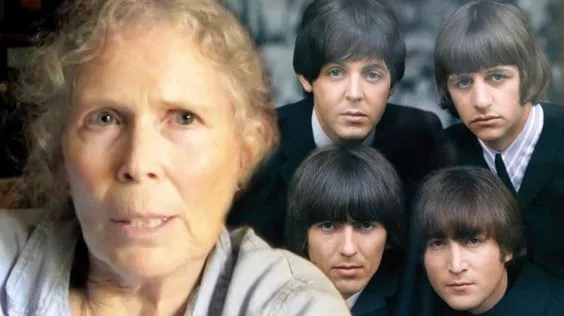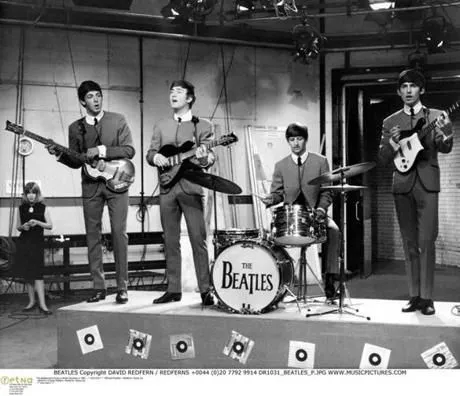About the song
(Watch the video below)
"Money (That's What I Want)" stands as one of The Beatles' most energetic and dynamic covers, showcasing their early prowess as interpreters of R&B and rock 'n' roll classics. Originally written by Berry Gordy and Janie Bradford, the song was released in 1959 and later gained widespread recognition through The Beatles' rendition on their second album, "With the Beatles." In this exploration, we delve into the origins, musical elements, cultural context, and enduring legacy of The Beatles' electrifying interpretation of "Money (That's What I Want)."
Origins and Composition:
"Money (That's What I Want)" was originally recorded by Barrett Strong in 1959 for Tamla Records, a precursor to Motown Records. The song's driving rhythm, catchy melody, and straightforward lyrics quickly caught the attention of audiences and became a hit on the R&B charts. Written by Berry Gordy, the founder of Motown, and Janie Bradford, the song captured the aspirational spirit of the time, reflecting the desire for financial success and material wealth.

The Beatles' cover of "Money (That's What I Want)" emerged from their deep love and appreciation for American R&B and rock 'n' roll music. The band's early repertoire was heavily influenced by artists such as Chuck Berry, Little Richard, and Buddy Holly, whose energetic performances and infectious rhythms left a lasting impression on The Beatles' sound. Their rendition of "Money" captured the raw energy and exuberance of the original while adding their own unique twist, showcasing their tight harmonies, blistering guitar riffs, and dynamic vocal performances.
Musical Elements:
At its core, The Beatles' rendition of "Money (That's What I Want)" is a high-octane explosion of sound and energy. The song features a driving rhythm section, with Ringo Starr's propulsive drumming providing a solid foundation for the band's frenetic performance. John Lennon's aggressive rhythm guitar adds a gritty edge to the arrangement, while George Harrison's blistering lead guitar solos inject a sense of urgency and excitement into the mix. Paul McCartney's pulsating bassline drives the song forward with relentless momentum, anchoring the band's electrifying performance.
Vocally, The Beatles deliver a powerhouse performance, with Lennon's gritty lead vocals complemented by McCartney and Harrison's dynamic harmonies. Their impassioned delivery captures the desperation and longing expressed in the song's lyrics, adding depth and emotion to the performance. The band's vocal interplay and tight harmonies create a sense of unity and cohesion, showcasing their exceptional vocal talent and chemistry as a group.
Cultural Context:
The release of The Beatles' cover of "Money (That's What I Want)" coincided with the height of Beatlemania, a cultural phenomenon that swept the globe in the early 1960s. The band's energetic performances and catchy melodies captured the hearts and minds of millions of fans worldwide, catapulting them to unprecedented fame and success. Their interpretation of "Money" further solidified their reputation as one of the most exciting and innovative acts of their generation, showcasing their ability to take classic songs and make them their own.

The song's themes of financial aspiration and material wealth resonated with audiences of the time, reflecting the growing consumer culture and economic prosperity of the post-war era. The Beatles' cover of "Money" served as a rallying cry for a generation of young people who were eager to make their mark on the world and achieve success on their own terms. Its infectious rhythm and anthemic chorus became emblematic of the optimism and ambition of the 1960s, inspiring countless artists and musicians with its message of empowerment and self-determination.
Enduring Legacy:
Nearly six decades after its release, The Beatles' cover of "Money (That's What I Want)" remains a timeless classic that continues to captivate and inspire audiences with its infectious energy and timeless appeal. Its electrifying performance, catchy melody, and relatable lyrics make it a perennial favorite among fans of The Beatles and a cherished staple of rock 'n' roll music. From its inception on "With the Beatles" to its place among the band's most iconic recordings, "Money" stands as a testament to The Beatles' enduring legacy and their ability to breathe new life into classic songs.
Conclusion:
In conclusion, The Beatles' rendition of "Money (That's What I Want)" is a dynamic and electrifying cover that showcases the band's exceptional talent and musical versatility. From its origins as an R&B classic to its transformation into a rock 'n' roll anthem, the song captures the essence of The Beatles' early sound and spirit. As we celebrate its legacy and enduring influence, we are reminded of the band's unmatched ability to captivate and inspire audiences with their infectious energy and timeless music.



